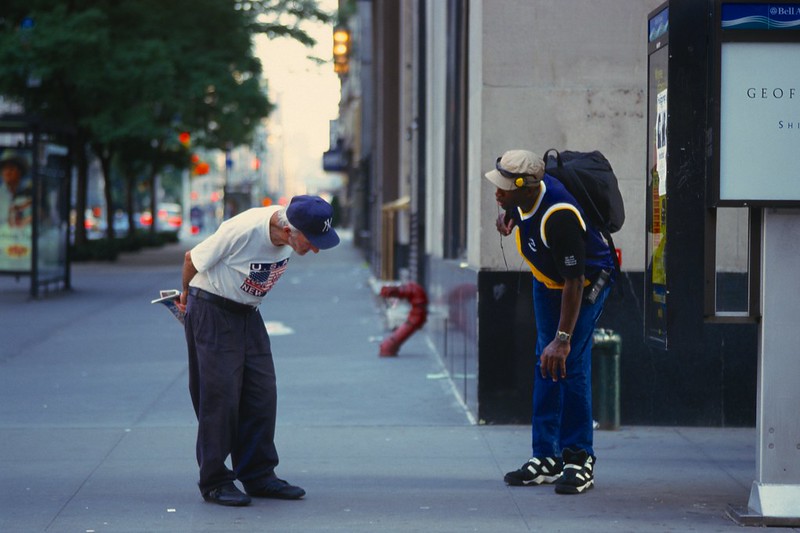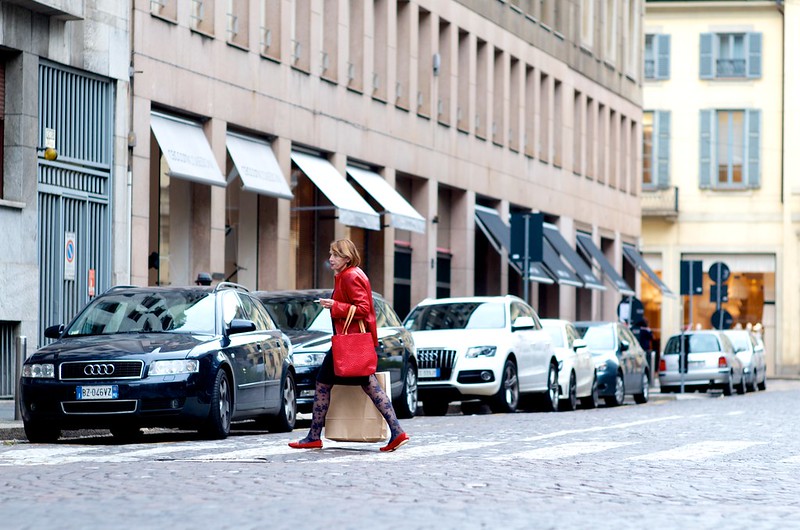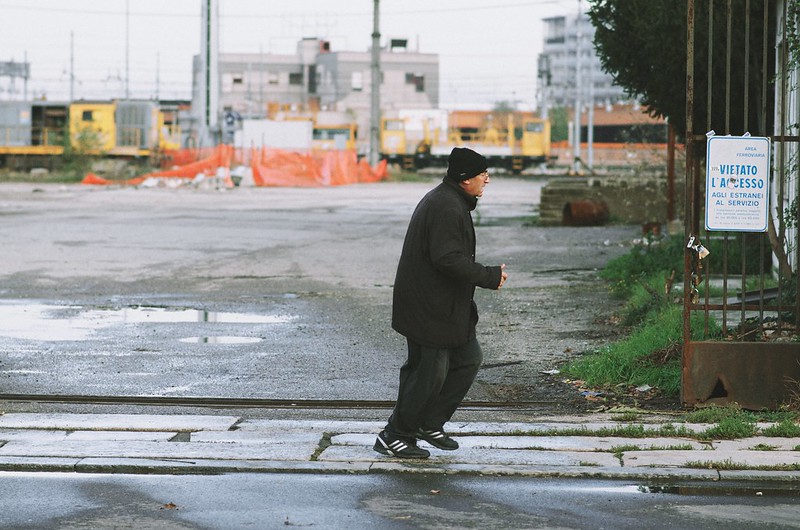But street photography is about shooting people, and if you can’t get close to them to take your photograph, then you’re just not connecting with your subjects to begin with. It’s that intimate connection that really makes a difference in street shots. As Robert Capa once said: “If your photos aren’t good enough, you’re not close enough.”
That’s what I have read recently; now, it doesn’t matter who wrote it, but this has become quite a common refrain people use when setting “rules” for street photography1.
There was something which happened a couple of months ago that made me think about this. It was when some guy with a camera got very close to my wife Giulia and my then 4-months old daughter and took 2-3 pictures of them. I was watching the guy, and I was surprised that he did not ask permission to do that — and he could have done easily since we were all in this sort of showroom to test Fuji products so it’s not like we were total strangers on the street. Also when he finished taking these shots he did not acknowledge Giulia nor he said anything like “thanks” or “do you want to see how you came out?” — he simply watched satisfied on his little LCD screen the results and continued talking to his friend.
So, returning to the sentence quoted at the beginning, this idea of being “close” to the subject has always bothered me a lot, because I frequently use my 85mm for photographs taken in the streets so why do I have to feel like I’m a “coward” not wanting to get too close? It is true that most of the times I’m not comfortable around people, but that is not the reason why I avoid snapping shots indiscriminately under the nose of total strangers: the reason is that I try not to contaminate the spontaneous nature of street photographs with my presence.
In other words: do you use a 35mm lens to get close to your subject, to get “intimate”, right? You want to know what happens? You enter the subject’s comfort zone, you take him/her by surprse so what you get is not a true candid anymore but a reaction shot (e.g., wide-eyed surprise looks, angry stares, etc.).
I understand that’s the style of many aggressive street photographers. they like to enter the shot by causing some reactions; however what I usually think is this, “are these photographers so full of themselves that they only pretend to shoot pictures of random people but what they really want to show off is their overbearing presence?”

From Eric Kim’s project “Dark Skies Over Tokyo“. Undeniably effective, but doesn’t work for me.
And I know that many times what comes out of this may very well be powerful shots, but what they’re doing here is intruding in other people’s life, it’s like the opposite of the “being intimate with your subject”. Maybe I’m a little naive, but I thought “intimate” implies a sort of connection and mutual respect; so I can very well get intimate with total strangers but then the resulting photographs would not show what my subject would do if he were to wander on the streets minding his own business.
So I argue that the aggressive street photographers are not documenting life on the streets anymore, assuming that’s the spirit of street photography. But even if they are, and even if street photography is some other obscure artsy concept that I haven’t quite grasped, that’s what I want to say to whoever talks about getting close and not using long lenses: stop busting my balls with references to Robert Capa and Cartier-Bresson because it is very likely that you are not anything like them. Do not put barriers to those that on the other hand who want to capture expressions and gestures of people at ease with themselves; let me use my fucking 85mm, stop saying that long lens have no raison d’etre in street photography.
Note The opening shot is maybe my first street photograph. It was taken in Rome with my F70 and a 50mm f/1.8 on Tri-X 400, more than ten, less than twenty years ago.
Negating all I’ve said above, this is one of my most precioous street photographs, and I have used a Nikon 35mm f/2 AF-D on Fuji Sensia 100 (yes, a film camera). But the point is that I was merely recording what was happening in front of me and did not provoke or stage anything. So even a normal to wide lens is fine in these cases.
Woman in red, quintessential Milano; shot with a pre-AI Nikkor 85mm f/1.8, yes one of those old lenses with the beatifully sculpted all-metal focus ring.
To capture the running man I used the most recent 85mm from Nikon, the 1.8G.
Berkeley mum, shot using a borrowed 180mm f/2.8 and a borrowed D700.
-
As if we really need to have rules for any type of creative endeavours; I already have troubles adjusting to the many “rules” that exist in the workplace, for example. ↩




